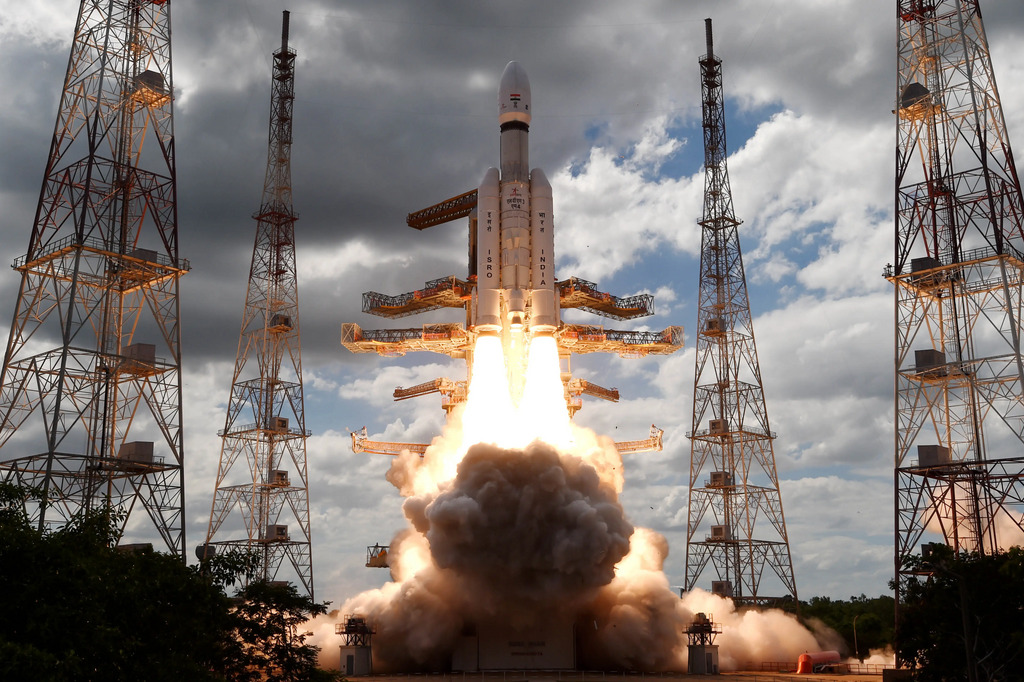India’s Chandrayaan-3 mission achieved a crucial milestone on August 5 with the successful completion of the Lunar Orbit Insertion (LOI). The insertion was carried out by retro-burning at the Perilune for 1835 seconds, starting at 19:12 Hrs IST. The maneuver resulted in an orbit of 164 km x 18074 km, as intended.
The Lunar Orbit Insertion was executed through a meticulously planned retro-burning procedure at the Perilune. The spacecraft’s engines fired for an impressive 1835 seconds, precisely starting at 19:12 Hrs IST. This intricate dance with the lunar gravitational forces culminated in the establishment of an intended orbit of 164 km x 18074 km.

Chandrayaan-3 Mission and Configuration
Yesterday’s successful orbit insertion feat marks the third consecutive time that ISRO has flawlessly inserted its spacecraft into the lunar orbit. It’s worth noting that ISRO has previously accomplished similar feats with Martian orbits, demonstrating their exceptional command over interplanetary navigation.
Chandrayaan-3 consists of two sections – the Lander and Rover configurations. The Lander will have the capability to soft land at a specified lunar site and deploy the Rover. Both the Lander and the Rover have scientific payloads to carry out experiments on the lunar surface.


The overall objectives of the Chandrayaan-3 mission are to demonstrate a safe and soft landing, conduct roving on the moon, and the conduct of in-situ scientific experiments.
Rover payloads include an Alpha Particle X-ray Spectrometer (APXS) and a Laser Induced Breakdown Spectroscope (LIBS), which are utilized to determine the elemental composition near the landing site.
The Lander is equipped with various payloads, including Chandra’s Surface Thermophysical Experiment (ChaSTE) for measuring thermal conductivity and temperature, the Instrument for Lunar Seismic Activity (ILSA) to observe seismicity in the landing area, and the Langmuir Probe (LP) to estimate plasma density and its fluctuations.
Navigating Future Maneuvers
As the Chandrayaan-3 mission continues its journey, a strategic series of maneuvers has been outlined to gradually shift the spacecraft’s orbit and align it with the lunar poles. One pivotal step in this process involves the separation of the propulsion module from the lander while the spacecraft remains in orbit.
Subsequently, a sequence of complex braking maneuvers will be orchestrated, paving the way for a delicate touchdown in the South Polar region of the Moon on August 23, 2023.
Health Monitoring
The health of the Chandrayaan-3 spacecraft remains optimal, with a vigilant watch maintained throughout the mission. The Mission Operations Complex (MOX) at ISRO Telemetry, Tracking, and Command Network (ISTRAC) plays a pivotal role in continuous health monitoring.
Collaborative support is extended by the Indian Deep Space Network (IDSN) antenna at Byalalu, situated near Bengaluru. Additionally, the European Space Agency (ESA) and the Jet Propulsion Laboratory (JPL) Deep Space Antenna contribute their expertise to this effort.
Charting the Path Ahead
The next phase of the mission is set to include a Lunar bound orbit maneuver on August 6, 2023, scheduled to take place between 22:30 and 23:30 Hrs IST. This critical step in the mission’s progression underscores the precision and foresight required for a successful lunar expedition.

